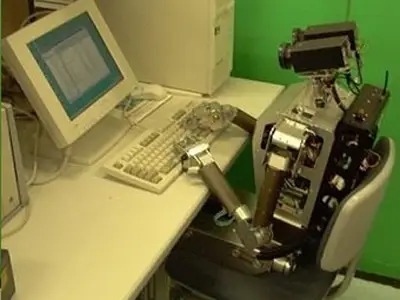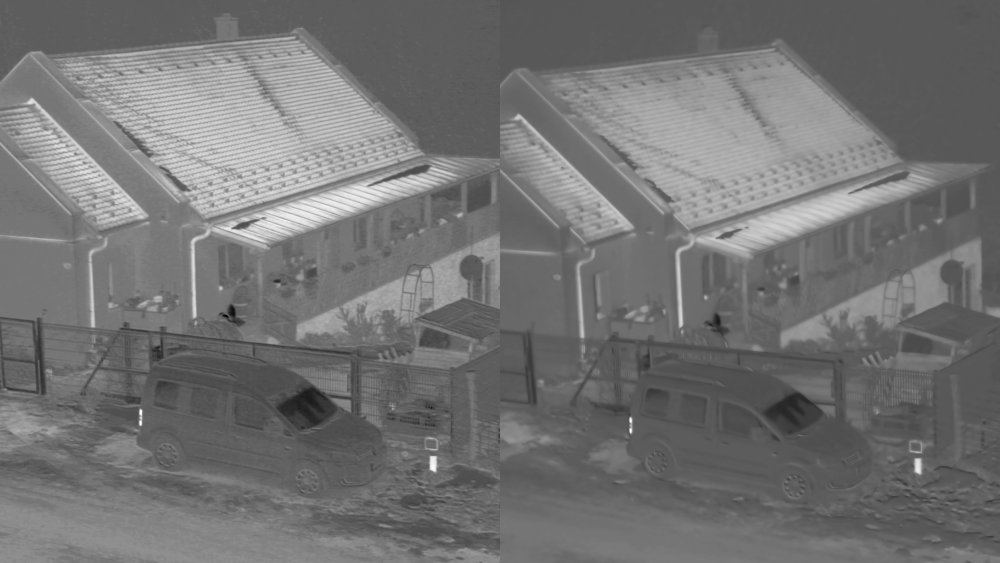Leaderboard
Popular Content
Showing content with the highest reputation on 01/13/2023 in all areas
-
Trailer for the film I'm the producer and cinematographer for the short film RE:ACTING, a film that is right now being submitted to festivals around the world. We shot this film last summer and I think we ended up with a very high-end result despite our low budget. I figured that some of you other filmmakers who are either starting out or are looking for inspiration for how to shoot a film with a limited budget would be interested in some of the things I learned along the way so I'm making a series of blog posts where I will break down how we shot the scenes, why we shot them in this way and also give a producer's perspective on how we secured locations and managed logistics. Part 1 in this series of posts breaks down this scene and talks about why we shot it like we did and why we ended up shooting it this way. Read more about it in this blog post and comment if you have any follow-up questions!6 points
-

How are you converting V-Log to "normal" colour?
Walter H and 2 others reacted to hyalinejim for a topic
As I was watching the S5II reviews I realised that people are taking the same V-Log files and ending up with very different colour results. I guess there are four main approaches - use the colour in the file untouched, use Panny's LUT, use Resolve's Rec709 conversion, or use a third party LUT. This post compares the accuracy of each and discusses the trade-offs that might be made. This applies to the GH6 and any other Panasonic cameras that share a similar color palette. I'll be using extracted colour patches from a colour target. This is how the chart looks in reality: Below, I match the gamma of a GH6 V-Log shot of this chart and then look at the results. Open in paired tabs on a monitor and flick back and forth to compare. 1. Don't transform the colour, just add contrast: You can see here by comparing with the original that overall saturation is way down, cyan magenta and yellow are too bright, reds are too orange, greens are too yellow and blues are too bright. Skintones are too green. I guess some people grade like this. However the colours are still in V-gamut and ideally should be transformed to Rec709. Even when I manually colour grade in Resolve so that some patches are accurate, then others are still totally off. Not recommended. 2. Use Panasonic's VLog to V709 LUT This official LUT comes with a half-assed curve as part of it. But you can separate the components using LutCalc and just get a LUT that is the colour transform only. The colour LUT must come first, before the curve, or things will go wonky. Cyans are too bright, magentas too pale, yellows too dark and orangey, reds a smidgen too bright and orangey, greens too pale and light, and blues are absolutely far too light and cyan. Skintones are slightly too pink. Despite these colour inaccuracies this is actually a good colour transform in the sense that as far as I have looked I have never spotted any colour weirdness in the image like banding or colour clipping. It's a slightly muted look though, and not good for landscapes - foliage, sea and sky will suffer a washed out fate here. 3. Use Resolve's Color Space Transform to convert to Rec709 colour Note that Panasonic's official LUT is available in Resolve under the LUT menu. However, you will get different colour results using the Color Space Transform effect to convert V-gamut to Rec709. I was a little bit excited when I saw these results at first. It looked off-hand to be a bit better than Panny's conversion, especially in terms of the lightness of the blues. However closer inspection reveals that although cyans are just about right, magentas are too bright and saturated, yellows too orange, reds too bright and saturated, greens are close but deep blues are oversaturated. This colour conversion differs from the Panny insofar as it has to be applied after the curve conversion, not before. When you do this I noticed some weird colour artifacts in footage I'd shot at an aquarium. So yes, the blues are more accurate but the inaccurate Panny conversion gave an image with integrity whereas blues began to clip and go weird (even with saturation mapping). Overall, this gives more accurate and I think nicer colour than Panny. However, if I was a wedding or nightclub shooter I'd be wary of colour artifacting in strong coloured lighting scenarios. 4. Third party LUT I was interested to see if I could make a colour accurate LUT for the GH6. I gave it a go and you can check out the LUT here. The LUT must go after the contrast curve, not before! Yes, it's very accurate compared to the other approaches. When contrast is relatively moderate and the range of colours is not so saturated it looks a bit similar to the Resolve transform. However, there is much better hue accuracy and saturation control in all tonal areas, which you really notice if you crank up the contrast or have very saturated. However, I did still notice some of that colour weirdness in the aquarium shots. So it looks like Panasonic know what they're doing in terms of sacrificing colour accuracy to preserve image integrity. And I guess if total colour accuracy is what you're after you need to shoot RAW! Finally, here's a comparison on a real world image: Vgamut Panasonic Vgamut to V709 Resolve Vgamut to Rec709 (skintones are nice but note the oversaturated reds on the skirt) Custom LUT3 points -
Fx30 or a7IV for Hybrid w/ 1 lens?
Emanuel reacted to ade towell for a topic
Well I've actually pre-ordered but pretty much know what I'll get with Panny - over the years have had the DVX100, AF100, GH2 (still got), GH3 and more recently the S1 which I loved for the IBIS and the DR. Panasonic are probably my favourite of the Japanese camera companies for trying to give you solid, well built decent spec and normally are best value for money. Not as heavy with the cripple hammer as some and good for firmware updates to give you the best camera they can1 point -
Fx30 or a7IV for Hybrid w/ 1 lens?
SRV1981 reacted to ade towell for a topic
I think the only reason Panasonic now has PDAF is because Sony finally decided they would sell them a sensor with it functioning. It seems Sony has made another generational AF leap with their new AI assisted AF system and so threw Panasonic a bone. Sony seem to have taken a lead on AF these days with Canon and now Panasonic close behind but definitely both trailing in 2nd place. Colour definitely is subjective - I prefer Panasonic colours with vlog over Fuji and then Canon for me. All have a really lovely image so to me it is then the features which make Panasonic S5ii the stand out, it ticks every box I have and has no real weakness. From great DR, full HDMI, class leading IBIS, up to 10 loadable luts and all kinds of connectivity with monitor and still being able to use touchscreen it is such an upgrade from the Canon R6 and also beats out the R6ii. All at a much cheaper price. Be nice to play around with some anamorphic too, has been a while Another big plus for me - audio was always something Panasonic seemed to take a little more seriously on their mirrorless cameras than others, and sounds like the S5ii takes that up another level. Apparently with pretty clean pre amps it's capable of recording 4 audio tracks 96khz 24 bit and takes Line level in (unusual for mirrorless) and can connect my Sound Devices Mix pre-d when needed.1 point -

Hard time choosing hybrid for photo/video... X-T4, S5 or Z6?
newfoundmass reacted to BTM_Pix for a topic
1 point -
Same setting later in the gloomy day, but the VR180 video is based on 8KDCI RAW clips. DeBayered in the Canon VR Utility program to REC709. H264 8bit rendered clips merged losslessly.1 point
-
I built a set lut for an arri amira project. it has a nice look to it under uv, ir and various other outdoor lighting situations. Now I have been using my own flashy lut for other projects with Mavo LF and Lumix S Vlog material and it is neither accurate nor keeps colours intact. But interesting enough desaturating before and after the grading pipeline gives it back its integrety. Color correction within the node workflow gives it back its plausibility, keeping character and beauty, which this lut was built for as well. That in 70% of the cases. For 8bit Slog2 on the FS700 it did not work well at all.:) Oversaturated reds and blues was the problem. I did a handcurve once for SLog2 material, which beat everything I was able to achieve with the official lut or CST. So I am always open for different ways. What do you mean by curve before Gamut? Do you mean a separate gamma transform and a separate gamut tranform? How do you do that? @hyalinejim Awesome post btw. Thank you!1 point
-
Fresh firmware just dropped. Apparently huge AF improvements.1 point
-
@gt3rs incredible footage, just wow! I've sold my R6 so I'm in the market for a new camera. S5II is on my radar but lens choice and system familiarity will probably keep me locked to Canon. Logical step was R6II but it is selling for 2900€ which is crazy considering I can get a brand new (grey import) R5 for 3200€ or an R5C for 3500€. Very little price difference in between these two currently. I can't make up my mind though. R5 has got IBIS which is quite important to me and good battery life. And since the latest firmware there are no longer major overheat issues. Still some time limits though and I remember @herein2020 saying he had all kinds of quirks with his copy including major EVF lag. Everything else I prefer on R5C, namely LUT support which is a game changer in quick-turnaround workflow for me and the separate stills/cine menus. I'm just concerned with absence of IBIS and the dreadful battery life. I think you have both R5 & R5C but prefer R5C I assume mainly for 8K60p? I have very little use for that but I guess its still an added bonus. Any other reasons why R5C is superior to R5 (aside from the cine OS extras)? PS: R3 has also gone down on grey market (4600€) and really sounds like a good pro option. Stacked sensor. 6K60p RAW is plenty enough. IBIS. Extensive battery life. Vertical grip might even come in handy for vertical video shooting which I'm doing more & more. Plus who knows I could maybe develop sports/action career !1 point
-
Here is a test video from the Canon R5, shooting in 8K DCI All-I Clog3 and using Canon's VR Utility with its built-in Clog3 LUT. I outputted 8K H264 8bit from the utility. Clips were losslessly merged, injected with VR180 metadata, and uploaded to YouTube. It is a true 3D VR180 video, but you can only see the 3D with a suitable VR headset. Without that it is 2D but you can still look around with your mouse (PC) or by moving your phone. The video should be 4K, but it is not yet.1 point
-
The Canon VR180 utilities have been revised to work with RAW video, including 8K 60P RAW. Also more render options, including high bitrate HEVC 4:4:4 for Windows computers. Now you can use other R cameras with the lens. And more.1 point
-
Sony vs Panny
solovetski reacted to newfoundmass for a topic
Lens selection has improved. They might be second to only Sony at this point, though as you said a lot of them are expensive. The performance of the Sigma EF to L adapter though might be something worth looking into, as the performance from what I've seen has been impressive. The Sigma lenses themselves look to work really well too. VLOG, from my experience, is the easiest LOG profile to work with. I wasn't a fan of VLOG-L, so I never really used it on my GH5 and kinda regretted buying the license. Once I got the S5 and full VLOG though that changed. For concerts and live events I still will usually film using the natural profile because it's "good enough" straight out of camera and the lighting isn't usually ideal, but for everything else I pretty much always use it because of how simple it is. I like the gamut.io VLOG conversion LUT a lot. Going from the GH5 to the S5, the size difference was negligible. You'll mostly feel it in the lenses, but I don't know that they're that much heavier than what you're used to. I actually disagree about lenses being a major factor in Sony's rise. For a long time the biggest knock towards Sony was the lens selection, but they grew despite that because for the longest time they had the full frame mirrorless market to themselves. That allowed them to overcome issues that plagued them, like the lens selection, terrible rolling shutter, overheating, ergonomics, color, etc. Canon and Nikon didn't enter the market until the end of 2018, and when they did their entries were weaker than the A7iii that had already been released six months earlier. That they pretty much opened the E mount to pretty much everyone to make lenses certainly did help, and it quickly made the "lack of lens selection" complaint a thing of the past, but being the only real full frame player in the mirrorless game for years while everyone lagged behind is what I'd say is THE major factor in their rise. That it all happened during the "content creator" boom was huge, too. Things though really could've shaken out differently. I think people forget how prevalent/popular the GH4 and GH5 (and even G7) were pre-A7iii. The A7iii was a game changer, but before that most video shooters were using either Canon DSLRs or Panasonic cameras if they were using ILCs. Full frame lenses for the E mount really didn't start coming fast and furious until Sony, Sigma, Tamron, and other third parties started to release a flood of lenses in 2019. Before that there were like 25 Sony lenses, a Tamron zoom, and Sigma's f1.4 primes, which wasn't a lot for a system that had been out for almost 7 years at that point. The lack of lenses didn't stop the A7iii from becoming one of the most popular cameras of all time right from the start (remember how it was backordered for a lot of 2018?) TL;DR version: Lens selection NOW might be a selling point for the E mount, but that really only recently became the case. In the early stages of Sony's growth it was actually a negative.1 point -

Hard time choosing hybrid for photo/video... X-T4, S5 or Z6?
PannySVHS reacted to pcmaster race for a topic
The Panasonic S5 and Nikon Z6 are both versatile cameras that can be used for both still photography and video. Both cameras have full-frame sensors and offer good image quality, but they have some differences that may make one a better fit for you than the other.The Fuji film X-T4, is a mirror less camera that offers advanced auto focus, high-resolution still images, and smooth, high-quality video with high-resolution. The camera also has high resolution electronic viewfinder and advanced auto focus compared to the S5. It also has higher resolution and better AF performance than the Z6. It also has film simulation feature that you might like. If you are looking for high-resolution stills and advanced video features, the X-T4 may be a good choice for you.1 point -
Well that's it, deal done; S5 and S1H being 'traded' for a pair of S5ii's. MPB collecting tomorrow, new boys on pre-order... I would have preferred a pair of S5iix's, purely for their look (don't need their spec, - anything over 200mbs not required) but as they are not available until end of May/early June and my next season starts end of March... I'm going to miss my S1H for sure, but this is going to be a better pairing for my video needs being: A. Identical bodies. B. Both having a built in fan rather than just the S1H (though the S5 never overheated a single time). C. The AF of course for which I have a need, especially with regard to shooting log because shooting that only made the AF worse with previous Lumix cameras. D. No 30 minute time limit as with the S5 which was a pain. Body A will be paired with the Sigma 16-28mm f2.8 and Body B with the Sigma 28-70mm f2.8 and that's happy days for the forseeable future. My only wish would have been the tilt screen of the S1H (or even the S1/S1R) but that is the ONLY compromise with this camera for me. For my video needs anyway... For stills, sticking with my trusty S1R's for the time being. I had already sold off my f2 Sigma primes. Loved them, but going forward, really wanted something a bit faster for the low light stuff so bought 3x f1.4's, the; 20, 35 and 85. I'm in no rush to replace them and had considered a complete S5ii lineup, but I reckon either Panasonic or Leica will come out with something maybe for next year that will update the S1R significantly enough for me to replace them. The ideal now would be an S5iiR model, but an S2R or something Leica flavoured would do it. On the other hand, I might just trade the pair of them for a third S5ii body as a 3 body set up rather than a 4 works better...except during wedding ceremonies and speeches unless I switch to a 3x zoom set up for those times. We'll see but glad I stuck with Lumix after considering; OM-1, XH2/S and even a wholesale switch to Sony. Faith restored in Lumix/L Mount. Hadn't really lost it as such but I had a concern that they might just blow it and not go phase detect but realistically, that would have been suicide for them.1 point
-
Panasonic S5 II (What does Panasonic have up their sleeve?)
solovetski reacted to newfoundmass for a topic
I sympathize with a lot of people that went with the GH6 for this reason, though it's just the nature of the beast unfortunately. The GH6 felt so long overdue at the time that it's hard to say this, but they might've been better off waiting until they could do PDAF before releasing it. Easy to say that now, though.1 point -
my vid is up! outside of the review aspect, i would love your feedback on my edit/ tone of this video.1 point
-

My wishlist for the next Panny upper tier S-camera
solovetski reacted to IronFilm for a topic
#1 wish: give us zero delay SDI output!! (they can go with DIN instead of BNC if they need to save space, no big deal, one of my old Atomos monitors already uses DIN instead of BNC) Oh snap! We posted this at exactly the same time.1 point -
Would love to hear your opinion about the GH6! @Attila Bakos External recording with the Fuji is fine though? Thanks for your findings and contributions!1 point
-
Fuji X-H2S
Emanuel reacted to Attila Bakos for a topic
Revised my findings, the previous comment can be deleted. (Both bodies are equally bad in 1080p.)1 point -
Fuji X-H2S
solovetski reacted to Attila Bakos for a topic
Recently purchased the X-H2s, and you know me, the first thing I look at is chroma resolution. Just dropping this in, on the left side you see the Cr channel of an EOS R 4K C-Log 8bit 4:2:0 recording (about 420 Mbps), on the right side it's X-H2s 4K F-Log 10bit 4:2:2 (about 615Mbps): Don't get me wrong it's better than the X-T3, but this smoothing can still lead to loss of color. I really wish we could turn it off and deal with color noise in post. ProRes RAW helps but it's a mystery to me. RAW on the X-H2s has the X-Trans pattern, obviously. However, it gets magically converted into Bayer in the ProRes RAW file. I had discussions with people who are involved in ProRes RAW->DNG conversion, also did my own test with Raw convertor (resulting DNG has Bayer pattern) and it seems that the data that arrives to a Ninja V recorder is already Bayer, even though the sensor is X-Trans. I'm still trying to confirm all this but if the body demosaics the X-Trans pattern and remosaics it into Bayer, then it's kind of a hack which in some cases can lead to artifacts.1 point

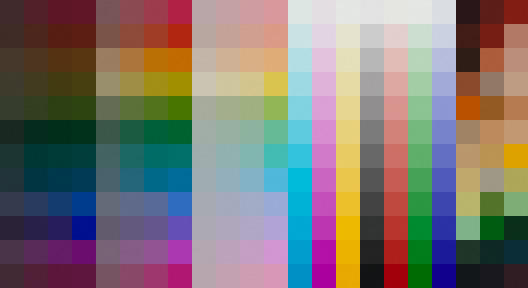

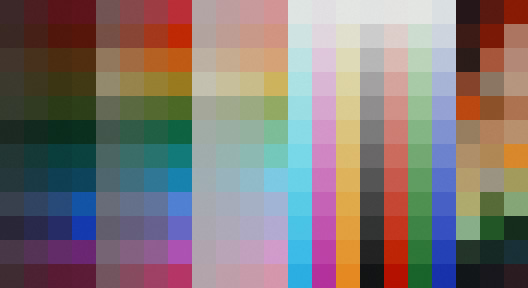
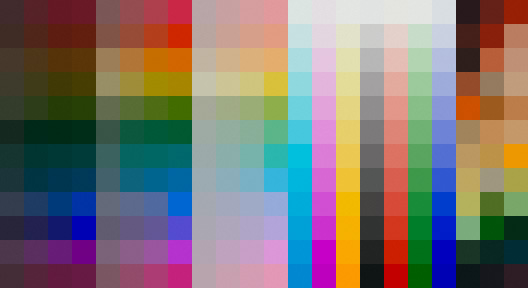
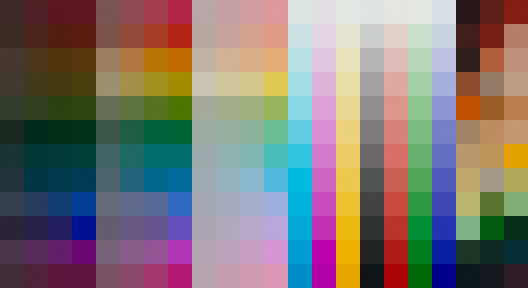
.jpg.1a7fef60ecaa63f71d378ea1fdcac4be.jpg)
_3.jpg.4e0fa0280e6a30b0ba92e2140167d203.jpg)
_2.jpg.fd2e474134ade4a5d1c08fd45c561afd.jpg)
_1.jpg.7e18c1343dfea5bd01430c9ae10356f9.jpg)
